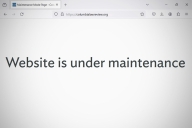You have /5 articles left.
Sign up for a free account or log in.
The decade after 2008 was not a good one for law schools. Applications and enrollment fell. Some closed. This is the subject of Fixing Law Schools: From Collapse to the Trump Bump and Beyond (NYU Press). But the author -- Benjamin H. Barton is professor of law at the University of Tennessee at Knoxville -- also has a path forward for law schools.
He discussed the book via email.
Q: Can you explain what you call the "original sin" of law schools?
A: Law schools have long been criticized for failing to teach the nuts and bolts of working as a lawyer along with the more academic study of the law. These critiques are largely true but miss the point that the focus upon the academic study of the law was not a mistake or an oversight -- historically it is the key feature of our current model. That is because the current, Harvard model of law schools needed to triumph over two adversaries to become the dominant mode of legal education: apprenticeships and much cheaper proprietary law schools (often taught at night in YMCA gyms).
During the period from 1880 into the 1930s, it was not clear which of these models would triumph. The Harvard model won the day by emphasizing the scientific study of the law, basically steering into the idea that the academic study of law was preferable to more practical approaches. The key difference between the Harvard model and apprenticeships/proprietary law schools was the use of full-time faculty teaching via the Socratic method and from appellate opinions. The full-time faculty also often engaged in legal scholarship rather than legal work. As such, the choice not to emphasize the practicalities of the law was not a bug, it was a feature!
The irony, of course, is that because of clinical programs and the American Bar Association's new experiential requirement, law schools are now more committed to teaching the practice of law than they ever have been before. We are not all the way there, but progress has surely been made.
Q: What happened in 2008? Why was the decade that followed so hard for law schools?
A: 2008 is actually the wrong date. For the first few years of the Great Recession, law schools actually saw a rise in applications, as college graduates who worried about a weak job market opted for graduate schools of all types, including law schools. In 2011 the overall economy had started to improve, but job placement for law schools stayed very poor. Suddenly there was a flood of terrible press featuring how bad the job market was, how expensive law school had become and the doubling of student debt during the 2000s. Law schools entered into a tailspin: fewer applicants, fewer enrollees and much more discounting for the students who did come. Revenue and enrollment fell precipitously overall, by around 33 percent. Several law schools closed, and many, many more faced challenging times.
Q: Since the election of President Trump, applications have increased, but you say this is not (by itself) a sign that all is well for law schools. Why?
A: Applications have indeed bumped up after the election of President Trump. The media narrative changed from “don’t go to law school” to “law school is for the heroes of the resistance!” It also helped that placement numbers finally ameliorated a bit from 2017 forward. There are two reasons for continued vigilance. The first is that the Trump bump may not prove sustainable or permanent. If applications or enrollment slide again, law schools would be right back in hot water.
Second, even if the Trump bump proves lasting, law schools should not and cannot just brush themselves off and return to exactly the behaviors that led to the 2011 collapse in the first place. In particular, law schools must stop continuously ratcheting up tuition faster than inflation and saddling their students with more and more debt. And things that cannot go on forever will not go on forever, and the sooner law schools get a handle on the cost to the students (and eventually to the federal government in terms of loans), the better.
Q: How should law schools change?
A: I have three basic suggestions. The first is the simplest to state, but the hardest to accomplish: law schools must become cheaper, or at least stop continuously outrunning inflation. The current cost and debt levels make law school a much worse investment than it was a generation ago, when placement was stronger and tuition was radically less. In 1985, it cost an average of $2,006 for in-state tuition and $7,526 in tuition for a private law school. In 2018 dollars that tuition is only $4,713 in-state and $17,681 for a private school. The actual 2018 averages are $27,591 for in state and $49,095 for private law schools! Law schools must recognize the changing market and adjust. If they do not, state and federal laws, especially those that subsidize law schools through state support or fully subsidized federal loans, are likely to change, and not to the benefit of law schools.
The second is for law schools to be much more aggressive and forward looking in teaching how to use technology to practice law. This does not mean that law schools should teach every student coding (although having an elective coding class is a good idea). But the lawyers who make it in the future will be the ones who leverage technology to their benefit, allowing them to practice “at the top of their license,” to use Richard Granat’s famous phrase. Technology can replace more rote tasks and allow lawyers to do more highly sophisticated work for more clients for less money. Rather than fearing technology as a competitor, law schools much embrace technology as a key assistant. We need to start teaching students these skills.
Last, the ABA has moved to regulation that focuses more on law school outputs (bar passage, job placement, attrition, etc.) rather than input measures (the size of the faculty, the number of books in the law library, etc.). This is a good trend, and law schools should take advantage of it by trying different models. That said, there has been too much predatory behavior by some law schools in the last decade, so I’d also encourage the ABA to be ever vigilant. So, law schools should let a thousand flowers bloom, but make sure not to be evil!
Q: In your teaching, how do you try to encourage those changes?
A: This is a great question. I recently started teaching a new class I call the A2J Lab where the students work in teams creating websites that provide free legal services to poor clients. Some of the projects we have done so far include a questionnaire that allows clients to expunge dismissed charges in Tennessee, a motion to reduce mandatory payments in a debt collection action, an adult name change in Tennessee and writing a cease and desist letter to harassing creditors. The class teaches the students some light coding, but much more importantly, it teaches them to closely examine a complicated legal issue, to break it apart into its constituent parts and then automate the solution to the problem. In my opinion, that is a key 21st-century legal skill and one that all law schools should do more to teach.








